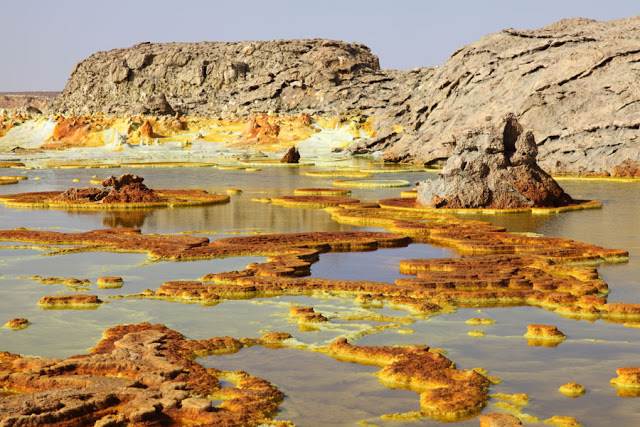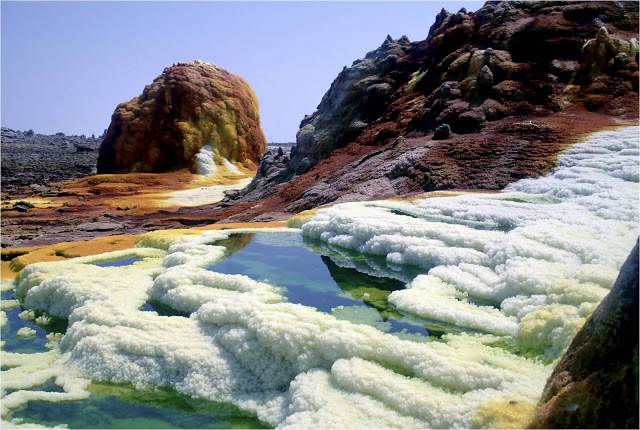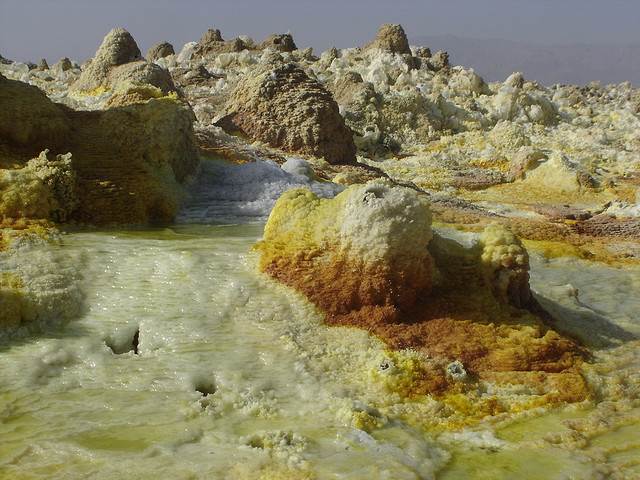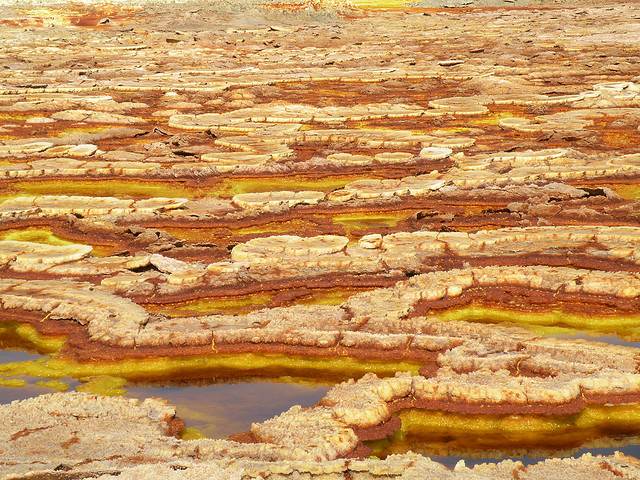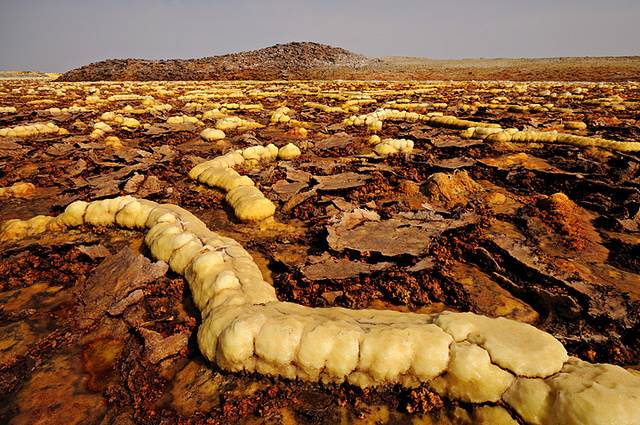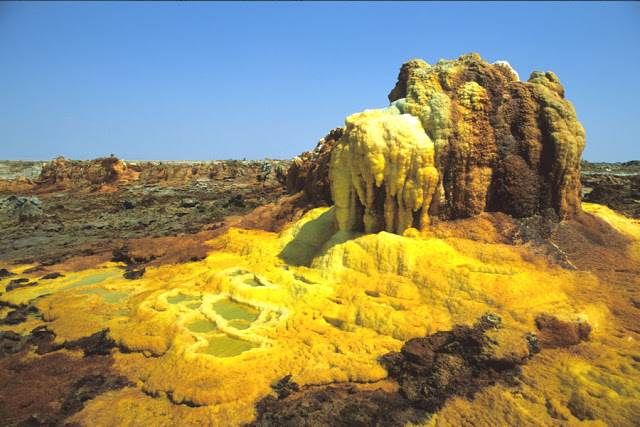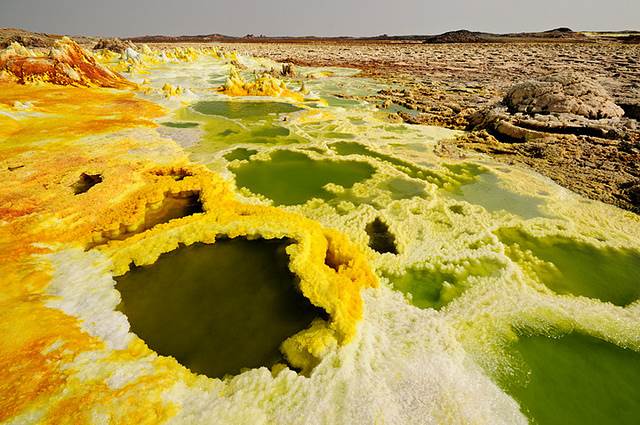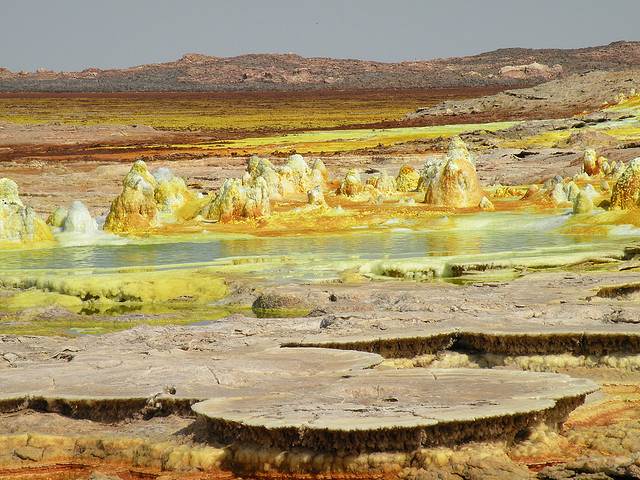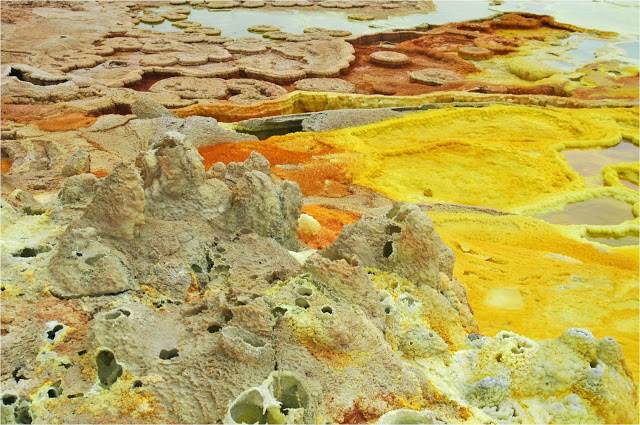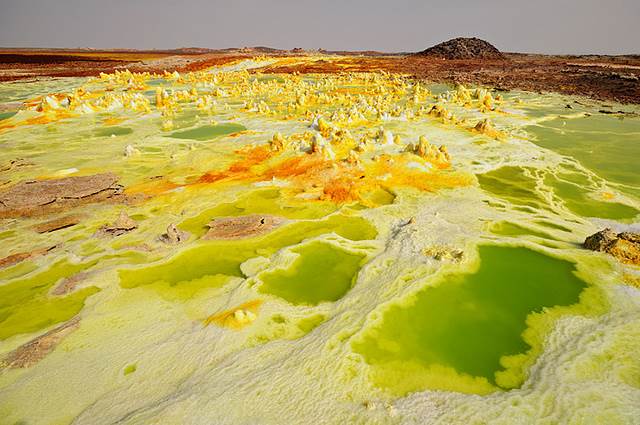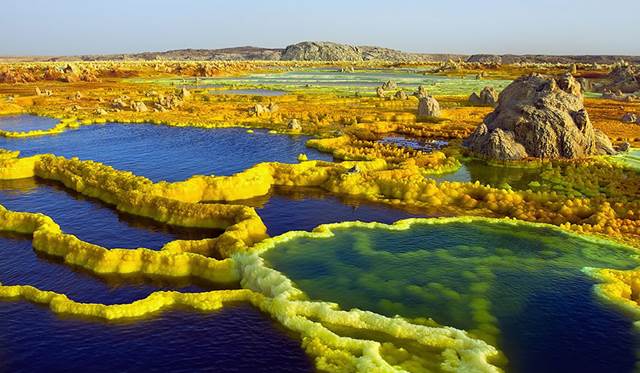
Dallol is one of the most remote places on Earth and very few people live here. Little wonder. After all, who would wish to live in close proximity to such a vast and alien backdrop as this? Even the name, in the local language of the Afar people literally means disintegrated. Even today the volcano is not mentioned in most books on the subject of volcanology.
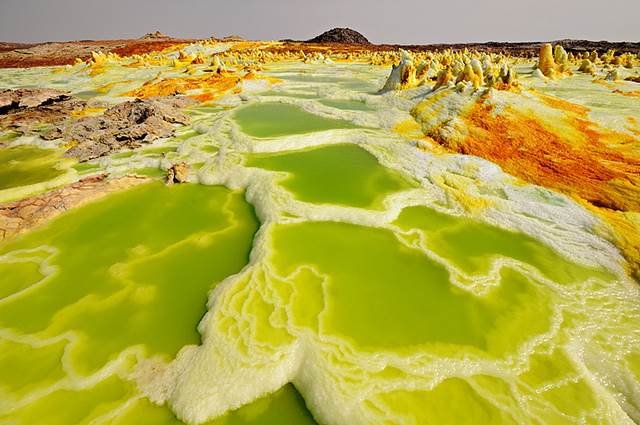
Not only that - Dallol is the record holder for the highest average temperature for an inhabited location. Recorded between 1960 and 1966 the average temperature is 34C (94F). The dazzling colors seen at the site, white yellow, green and red ocher, are due to the strong presence of sulphur, iron oxide, salt and other minerals.
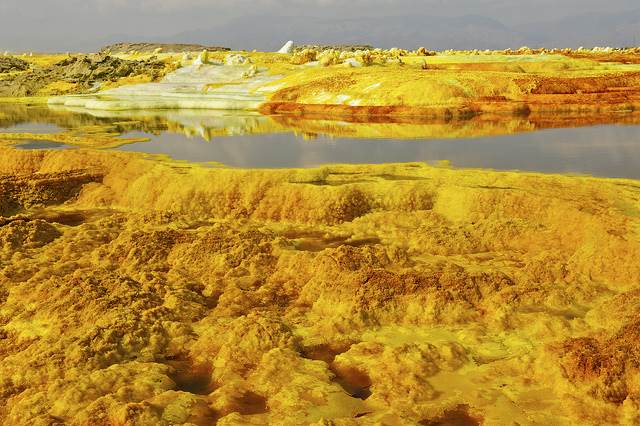
People wishing to visit Dallol have two choices in terms of transport; firstly, they could hitch a lift on one of the camel caravans which passes the volcanic crater. Otherwise they must rent a 4WD vehicle from the nearby town of Mekele. Nearby, in Ethiopian terms, means a one day drive.
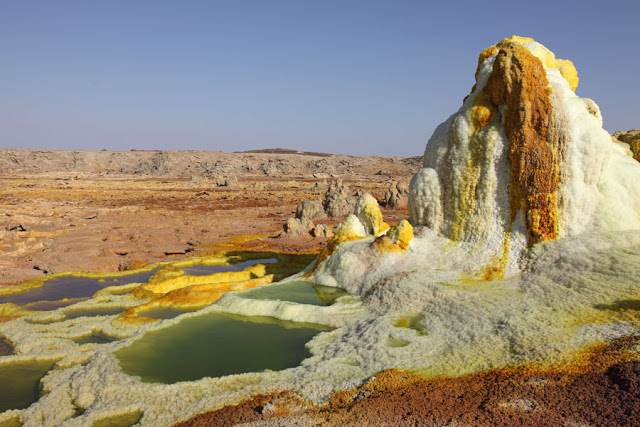
Dallol is effectively a volcanic explosion crater. It was formed when basaltic magma intruded in to salt deposits and water. This subsequently caused a huge phreatic eruption. The rising magma made contact with the ground water. As magma is so extremely hot the water evaporated immediately. The result was a huge explosion of rock, ash, water and steam - not to mention volcanic bombs (molten rock which cools and solidifies before it hits the ground).
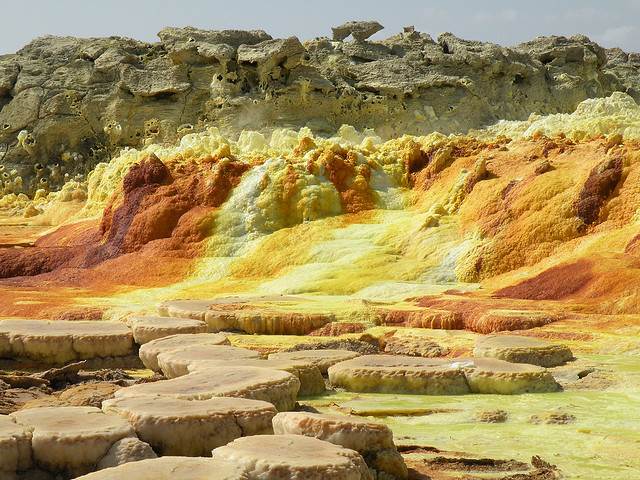
The volcano last erupted in 1926 and gained some attention then but it had been known to Europeans for about two hundred years. Yet the site remained effectively unknown to most until recently - simply because of the hostile nature of the environment, the almost unbearable heat of the area and the very present danger from toxic fumes.
